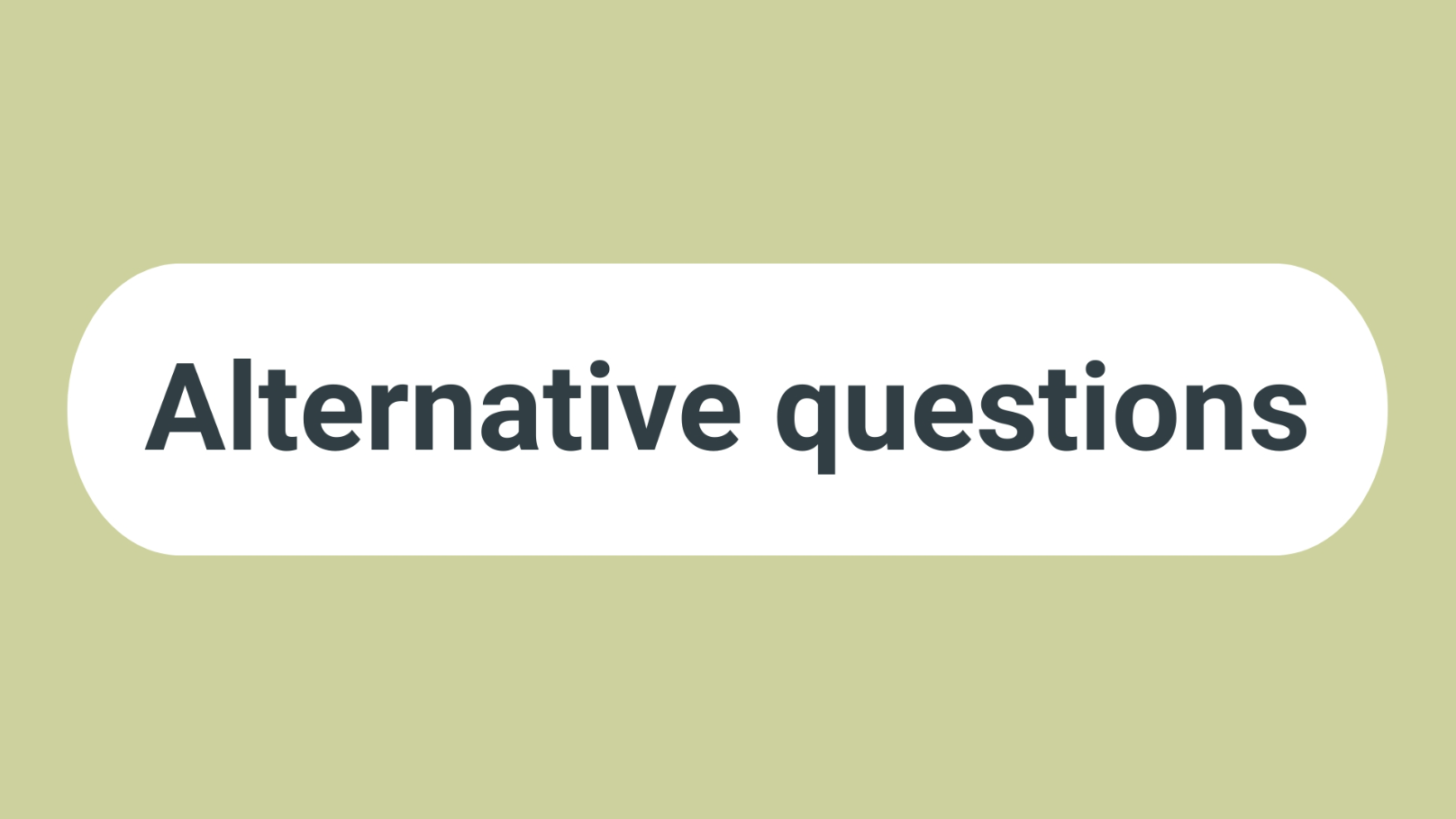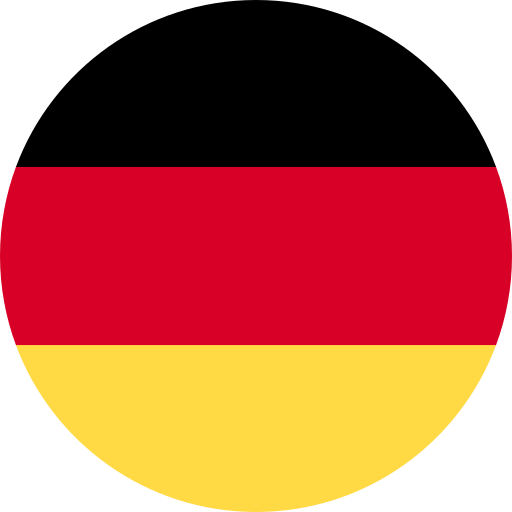Alternative Questions in English: What They Are and How to Build Them?
Oleksandra Kulish
Book expert
Alternative questions, also called “choice questions,” are a type of questions in the English language. They allow the speaker to offer the interlocutor a choice between several answer options. Such questions begin with a question word, must contain the conjunction “or,” and imply that the addressee will choose one of the suggested alternatives.
The main purpose of such questions is to provide an opportunity to choose from several options. For example, when inviting someone, you can offer two drinks: “Would you like cola or soda?” (Would you like cola or soda?).
Alternative questions help clarify information when you are not sure about the correct option. For example, to find out a convenient day for a meeting, you can ask: “Is Friday or Sunday better for you?” (Is Friday or Sunday better for you?).

Structure: how to form an alternative question in English?
Let’s talk about how to correctly form an alternative question in English. Alternative questions have the same structure as general ones: the auxiliary verb comes first, the subject comes
second. After the subject comes the predicate, but not always. At the end of the sentence, using the conjunction or, we offer the interlocutor possible answer options:
|
Auxiliary verb |
Subject |
Main verb |
Other parts of the sentence |
Translation |
|
Is |
he |
— |
happy or sad? |
Is he happy or sad? |
|
Have |
you |
seen |
a movie or a series? |
Have you watched a movie or a series? |
Alternative questions can be asked about any part of the sentence: the subject, predicate, object, attribute, or adverbial. The table provides examples of questions for different parts of the sentence.
|
Type of question |
Examples of alternative questions in English |
|
About the subject |
Did you repair the bike or did your brother repair it? — Did you or your brother repair the bike? Did you or your brother repair the bike? — Did you or your brother repair the bike? |
|
About the predicate |
Does he play football or watch it on TV? — Does he play football or watch it on TV? Did they run or cycle to the park? — Did they run or cycle to the park? |
|
About the object |
Can you hear music or noise from the street? — Can you hear music or noise from the street? Shall we order pizza or sushi for dinner? — Shall we order pizza or sushi for dinner? |
|
About the attribute |
Do you prefer hot or cold soup? — Do you prefer hot or cold soup? Have they booked a cheap or luxury hotel? — Have they booked a cheap or luxury hotel? |
|
About the adverbial |
Did your sister call in the evening or at night? — Did your sister call in the evening or at night? Do you study online or in class? — Do you study online or in class? Did the children draw the picture quickly or slowly? — Did the children draw the picture quickly or slowly? |
Alternative questions can also start with question words or constructions. In this case, a comma is placed before the main part of the question:
What is healthier, to walk to work or to take a bus? — What is healthier: walking to work or taking a bus?
How many books do you read per month, three or four? — How many books do you read per month: three or four?
Instead of a comma between the introductory construction and the main part of the question, a colon can be used:
Where are we meeting: at the cafe or in the park? — Where are we meeting: at the cafe or in the park?
How should I send the letter: by email or by post? — How should I send the letter: by email or by post?
When asking an alternative question, you can offer the interlocutor two answer options — “yes” or “no.” However, this form is straightforward — it emphasizes irritation and impatience of the speaker:
Do you plan to help me with the project or not? — Do you plan to help me with the project or not?
Hey, are you coming to the party or not? — Hey, are you coming to the party or not?
In informal speech, native speakers construct short alternative questions:
— I’d like some juice.
— Apple or orange?
— I would like some juice.
— Apple or orange?
In general, the structure of an alternative question looks like this:
|
Type of sentence |
Formula |
Example |
Translation |
|
With an auxiliary verb |
Do/Does + subject + V1 + option A or option B |
Do you prefer tea or coffee? |
Do you prefer tea or coffee? |
|
With the verb to be |
Is/Are + subject + option A or option B |
Is the lesson online or offline? |
Is the lesson online or offline? |
|
In the past tense |
Did + subject + V1 + option A or option B |
Did she buy apples or oranges? |
Did she buy apples or oranges? |
|
In the future |
Will + subject + V1 + option A or option B |
Will you travel by train or by car? |
Will you travel by train or by car? |
|
With a modal verb |
Can + subject + V1 + option A or option B |
Can we meet today or tomorrow? |
Can we meet today or tomorrow? |
How to Answer Alternative Questions
You can answer alternative questions either in full or briefly, simply indicating one of the options offered in the question. Simply saying "yes" or "no" will not work, because this is an open question, and such an answer would be incorrect.
Do you need a book or a notebook? — Yes. (Obviously, the answer does not make sense)
Here is how an answer to an alternative question looks in English:
- Would you like juice or milk? — I’d like juice. Do you want juice or milk? — I want juice.
- Do you prefer morning or evening workouts? — Morning. Do you prefer morning or evening workouts? — Morning.
- Are the children playing outside or inside? — They’re playing outside. Are the children playing outside or inside? — They are playing outside.
When an alternative question concerns the subject, the second subject is always preceded by an auxiliary or modal verb (because in English grammar the predicate is mandatory). Such a question requires a brief answer, just like any special question about the subject:
— Did you fix the lamp or did your dad? — Did you fix the lamp or your dad?
— My dad did. — My dad.
— Can you drive or can your brother? — Can you drive or your brother?
— My brother can. — My brother (can).
Alternative questions can start with a question word. Such questions consist of a special question and two parallel sentence elements connected by the conjunction or. Usually the structure is:
Question word + auxiliary verb + subject + predicate: option 1 or option 2 + ?
When are you leaving: tomorrow or the day after? — When are you leaving: tomorrow or the day after?
Who is coming to the meeting: Anna or Mark? — Who is coming to the meeting: Anna or Mark?
What are you reading: a novel or a magazine? — What are you reading: a novel or a magazine?

Common Mistakes When Using Alternative Questions
Here are some of the most common mistakes in constructing alternative questions that beginners often make.
Using and Instead of or
One of the most common mistakes is replacing the conjunction or with and.
- Mistake: Do you want tea and coffee?
Here the question sounds as if you are offering both options at once. This is no longer an alternative question, but an offer to get everything at the same time.
- Correct: Do you want tea or coffee?
The conjunction or clearly indicates that the interlocutor must choose one option, not both.
Tip: Always use or in all alternative questions, even if there are three or more options.
Incorrect Word Order
Another mistake is mixing word order when the alternative option is placed after the subject without an auxiliary verb.
- Mistake: You want tea or coffee?
In spoken language, such a question may be understood, but formally it is incorrect because the auxiliary verb (do/does) is missing.
- Correct: Do you want tea or coffee?
That is, the standard order for alternative questions is: auxiliary verb + subject + action + options with or.
Tip: Always check if there is an auxiliary verb at the beginning of the question when it is needed for a certain tense.
Too Many Options
Sometimes authors try to fit too many options into one question, creating a structure that is difficult to perceive:
- Technically possible: Do you prefer tea, coffee, or juice?
Three options are still acceptable. More than three options make the question bulky, hard to understand, and answer. For example: Do you want tea, coffee, juice, milk, or water? — here the interlocutor may get confused and not understand what to choose.
Tip: The optimal number of options is 2–3, otherwise the question loses clarity.
The Difference Between Alternative, General, and Special Questions
In English grammar, there are several classifications of questions, each serving a specific function in communication. To better understand the features of each, it is useful to compare different structures.
- General. This is one of the most common types, where the answer is limited to "yes" or "no." For example, Are you reading a book? Translation: Are you reading a book? Here there is no choice between two or more options, as in other cases.
- Special. This type aims to obtain specific information. The question is constructed with a question word. Example: What time does the train arrive? Translation: What time does the train arrive? Such constructions require a detailed answer.
- Tag. Used to maintain conversation and require confirmation from the interlocutor. For example, You’ve finished the task, haven’t you? Translation: You have finished the task, haven’t you? The purpose of such questions is to involve the interlocutor in dialogue.
- Indirect. Unlike direct questions, they sound more polite. Used when it is necessary to ask a question more correctly. Example: Could you let me know whether the lesson starts at 9 or 10? Translation: Could you tell me whether the lesson starts at 9 or 10? This form helps maintain a polite tone in communication.
It is important to consider the goals and intentions of your conversations to choose the appropriate option and construct the sentence correctly.
And Don’t Forget About Intonation
An alternative question assumes that the interlocutor should choose one correct answer from two options. Example: Is she sixteen or seventeen? (Is she 16 or 17?)
Intonationally, such a question consists of two parts.
- The first part is essentially a general question, so the voice rises from the first word to the last before or.
- The second part — the intonation falls, with the lowest pitch on the last word.
Logical stress falls on the contrasted words (in the example — the numerals sixteen and seventeen).
During conversation, it is important to pay attention to pronunciation and intonation to better understand the interlocutor and get the necessary information. For example, the question: "Have you cleaned the room, or will you do it tomorrow?" may sound differently depending on the intonation: it may be a neutral request or a slight reproach.
Different intonational patterns help clarify the meaning and intentions of the interlocutor, which is especially useful for those who are just starting to learn the language. Now you know more about what alternative questions are in English and can use them more confidently.






